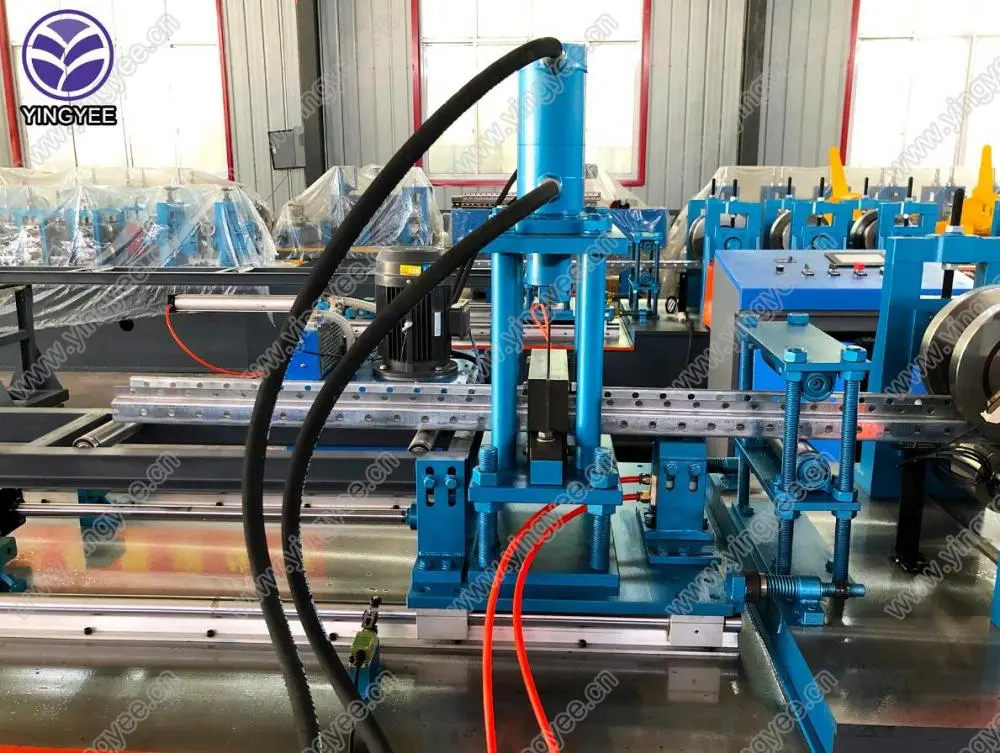
An Overview of Cable Tray Manufacturing Machines
In today's fast-paced industrial environment, the need for efficient and reliable electrical infrastructure has become paramount. One key component of electrical systems, especially in commercial and industrial buildings, is the cable tray. A cable tray is an assembly that supports insulated electrical cables used for power distribution and communication. To meet the ever-increasing demand for these essential components, the development and utilization of advanced cable tray manufacturing machines have become crucial.
Cable tray manufacturing machines are specialized equipment designed to produce cable trays in various sizes and materials, including steel, aluminum, and fiberglass. These machines streamline the production process and enhance precision, resulting in high-quality products that meet regulatory standards. The primary processes involved in cable tray manufacturing include cutting, shaping, welding, and finishing, each of which can be performed with high efficiency when utilizing the right machinery.
Key Components of Cable Tray Manufacturing Machines
1. Cutting Machines These machines are responsible for cutting raw materials into the desired lengths for various types of cable trays. Precision cutting is essential as it influences the overall quality and fit of the finished product. Modern cutting machines come with CNC technology that ensures accuracy and speed, reducing material waste.
2. Bending Machines Once materials are cut to size, they need to be shaped into the desired form. Bending machines play a vital role in this phase of production. They can create various angles and curvatures in the metal sheets used for cable trays. Advanced models often allow for programmable bends, accommodating a range of design specifications with minimal manual intervention.
3. Welding Equipment Structural integrity is crucial for cable trays as they must support heavy cables and resist various environmental conditions. Welding machines are utilized to join different components of the tray securely. Automated welding systems ensure consistent quality and strength in the joints, significantly reducing the likelihood of failure during operation.

4. Finishing Lines The finishing process typically involves coating the trays to enhance their durability and resistance to environmental factors such as moisture and corrosion. Various techniques such as powder coating and galvanization can be applied in this stage, which not only improves appearance but also significantly extends the lifespan of the trays.
Advancements in Cable Tray Manufacturing Technology
Recent advancements in manufacturing technology have significantly improved the efficiency and capabilities of cable tray production. The integration of automation and robotics allows for a more streamlined and flexible manufacturing process. This means that manufacturers can quickly adjust to different production volumes and specifications without halting operations or incurring high costs.
Moreover, Industry 4.0 technologies such as IoT (Internet of Things) and AI (Artificial Intelligence) are being increasingly utilized in cable tray manufacturing. These intelligent systems provide real-time data and analytics, enabling manufacturers to optimize their processes, predict maintenance needs, and improve overall productivity.
Conclusion
The demand for cable trays continues to grow in line with the expansion of electrical networks and infrastructures globally. As a result, the significance of cable tray manufacturing machines is undeniable. By adopting advanced technologies and automation in their manufacturing processes, producers can ensure the creation of high-quality, durable cable trays that meet the industry's evolving needs. The evolution of cable tray manufacturing is not just a reflection of technological advancement but also a vital component in supporting the infrastructure of modern society.